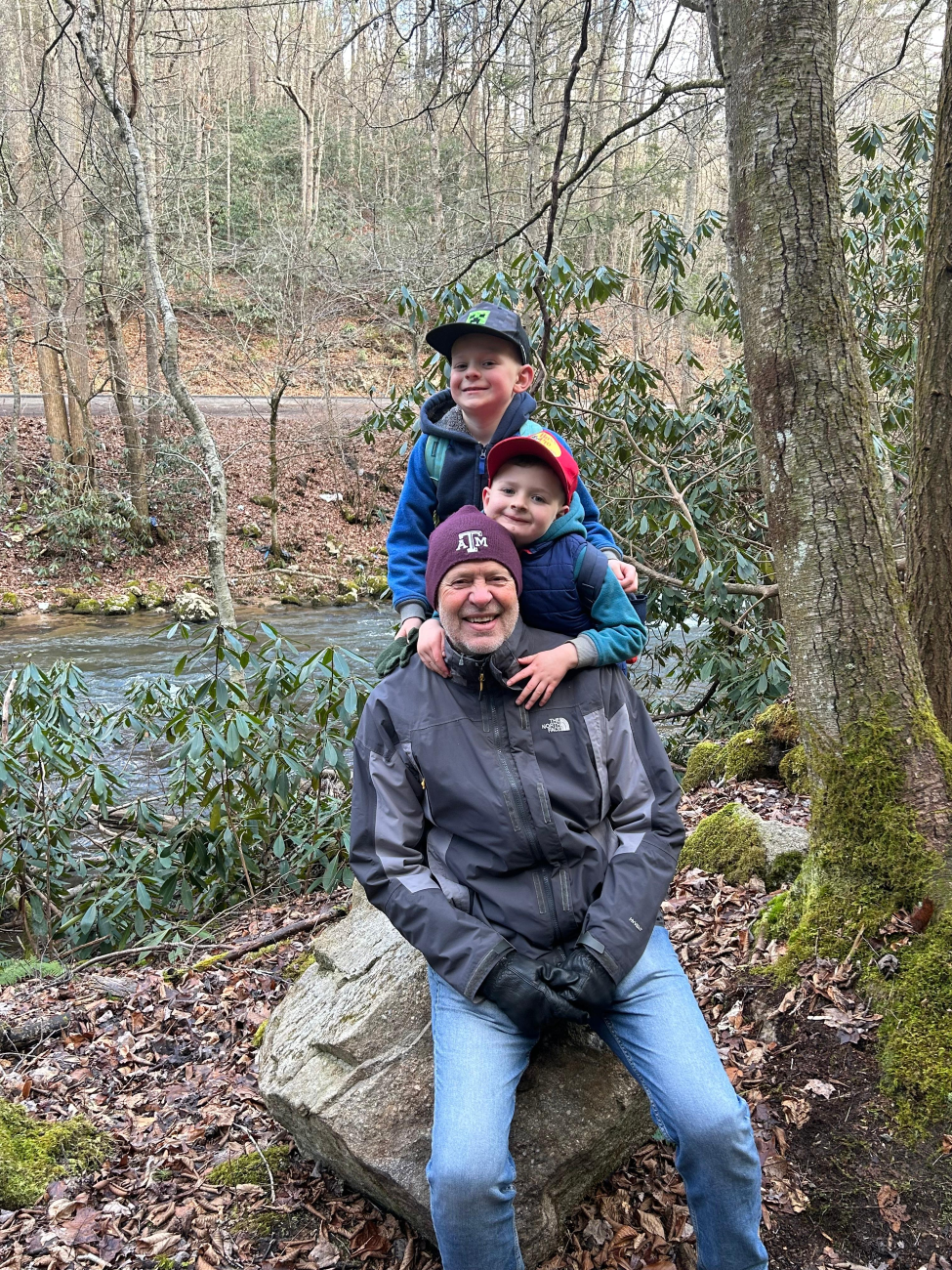At the Bedside: After years of mysterious cardiac episodes, a patient is offered a new lease on life through innovative multidisciplinary techniques championed at UTHealth Houston



Fifteen years ago, while walking to his car after a routine workout at the gym, Robert Brown, now 71, suddenly felt violently ill. He was rushed to the emergency room.
“I had some kind of heart event, but it was a big mystery to the doctors. So eventually, after several tests, they finally said, ‘Well, we don’t know, we think you’re good to go.’ They never could figure out what happened to me,” Brown said.
That was the case until New Year’s Eve in 2021, when Brown woke up with a heart rate of 240 beats per minute and felt the same overwhelmingly ill feeling he had 12 years before. He was rushed to an emergency room in College Station, Texas, where he lives, and physicians were able to restore his normal heart rhythm by delivering a controlled electric shock to the heart, called a cardioversion. Doctors determined Brown had ventricular tachycardia, a fast heart rhythm that originates in the ventricles, the heart’s lower chambers, that can cause cardiac arrest and sudden death. They referred him to Ramesh Hariharan, MD, chief of cardiac electrophysiology and professor of cardiovascular medicine at McGovern Medical School at UTHealth Houston.
“He didn’t have any blockages, which is usually the cause of arrhythmia episodes like Mr. Brown’s, so we were left with figuring out what caused this,” Hariharan said. “It turns out he had a rare issue relating to inflammation of the aorta wall, and he had a huge scar in his heart.”
According to Hariharan, a scar on the heart is very rare for someone who has no coronary blockage and no previous heart attack. Hariharan and his team studied Brown’s heart and mapped out the circuit causing his arrhythmia. Then, through catheter ablation, a procedure that uses heat to create tiny lesions in the heart tissue, he destroyed the abnormal tissue in Brown’s heart. These induced lesions disrupted the electrical pathways causing ventricular tachycardia to prevent it from recurring. But when one arrhythmia was resolved, Brown’s heart would produce another, and Hariharan determined it would be too risky to destroy each one as it formed. So, Brown went home with medication to stabilize his heart’s electric rhythm and did not have a significant cardiac event for two years.
In 2024, Brown found himself back in the hospital due to a common complication from a standard medication, called amiodarone, used to treat his ventricular tachycardia.
With no other medication available for his disease, and since the conventional procedure of catheter ablation was too risky for Brown, Hariharan joined forces with Alejandro Vidal Margenat, MD, assistant professor of cardiovascular medicine at McGovern Medical School. Together, the two searched for unconventional ways to treat Brown. They turned to Sunil Krishnan, MD, professor and John P. and Kathrine G. McGovern Distinguished Chair in the Vivian L. Smith Department of Neurosurgery at McGovern Medical School, who was using radiation therapy for other conditions.
The team then evaluated whether Brown would qualify for a first-of-its-kind radiation ablation procedure for ventricular tachycardia. Vidal, Krishnan, and Hariharan worked together to create a 3D model of Brown’s heart and merged the model with CT scans to identify the tissue they needed to target.
The non-invasive procedure would deliver precise radiation doses to specific areas of Brown’s heart, aiming to disrupt faulty electrical signals that cause rapid heartbeats. Unlike catheter ablation, which uses heat or cold to create lesions inside the heart, this procedure could reach areas that catheter ablation could not.
“Radiation therapy is primarily used to treat cancer cells in the body, but increasingly we are exploring treatment of benign diseases with the assistance of our non-oncology colleagues. The principles of targeting are the same, but the target is different,” said Krishnan, who also co-directs the Therapeutics and Pharmacology Program at The University of Texas MD Anderson Cancer Center UTHealth Houston Graduate School of Biomedical Sciences. “The treatment of arrhythmias of the heart is one such scenario where we have found that patients who have ventricular tachycardias that do not respond to medications or catheter-based ablations may benefit from radiation therapy. These patients receive a single dose of precisely targeted high-dose radiation therapy focused carefully on the area of the scar seen on MRI scans or the abnormal electrical circuit identified by our electrocardiology colleagues during cardiac mapping studies. Our theory is that this radiation dose resets the electrical behavior of the cells and restores normal heart rhythm.”
Brown traveled to Houston in January 2024 for the procedure.
“I had to hold my breath so the radiation could hit the targeted areas,” he said. “But there was no pain. When the doctors finished, I stepped off the table and drove back home to College Station. I didn’t need to set aside time for recovery, and I’ve had a normal heart rhythm since. I even started exercising again.”
Since then, the team has used the procedure on 12 more patients with ventricular tachycardia. While early results show promise, this approach is still considered experimental.
“This opens the door to treat patients that would not be candidates because they are too sick or because they have other conditions and do not allow us to do the conventional procedure, like Mr. Brown,” Vidal said.
Now, thanks to the collaborative effort of physicians at UTHealth Houston, Brown has been arrhythmia-free for a year and is looking forward to what’s next. “I actually haven’t been able to take a vacation because I had to be close to doctors, and now I can visit family and friends in Canada, where I used to live,” he said.
For media inquiries only: 713-500-3030